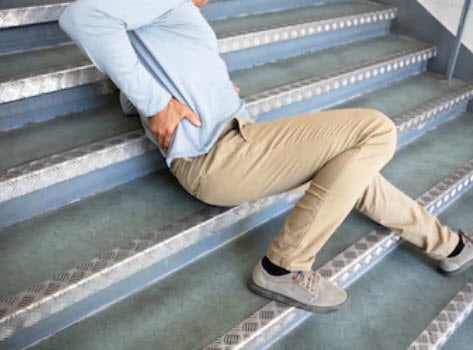
We wish the answer to this question was yes, but unfortunately, fall injury victims don’t automatically get settlements. These incidents send over eight million Americans to hospital emergency rooms every year. The ER bill is only the beginning of the medical bills in these cases. Additional medical expenses, such as physical therapy costs, are almost inevitable. Furthermore, a slip-and-fall injury causes significant pain and suffering throughout the treatment and recovery process.
Although fall injury victims don’t always get settlements, a Columbia personal injury attorney always puts in the same amount of effort. Diligent attorneys who work hard usually obtain maximum compensation, just like students who do their homework usually do well on tests. Compensation in a fall injury case usually includes money for economic losses, such as medical bills, and noneconomic losses, such as emotional distress.
Comparative Fault
Since so much money is at stake in these cases, insurance company lawyers do whatever it takes to reduce or deny compensation. The comparative fault rule is one of the most common defenses in these cases.
Quite simply, insurance company lawyers argue that the victim didn’t watch where s/he was going. And, the failure to maintain a proper lookout, as opposed to the landowner’s negligence, substantially caused the victim’s injury. There was a lot of Legalese in that paragraph, so let’s break it down.
Negligence is basically a lack of care. Landowners are negligent if they had a duty of care and they knew about, or should have known about, a hazard that caused injury. Most commercial and social guests are invitees, a status that invokes a very high legal responsibility. Owners must ensure their premises are reasonably safe.
Substantial cause basically means primary cause. Bad weather, like wet roads, sometimes contributes to car crashes. Driver negligence, usually speeding, substantially causes these wrecks.
The comparative fault defense is a two-step process. Attorneys must convince a judge, and then the jury, that the defense applies. So, a Columbia personal injury lawyer has two opportunities to refute this defense. Direct evidence of negligence, like proof the owner ignored the hazard, almost always does the trick.
In the unlikely event the jury considers this defense in its verdict, all is not lost. South Carolina is a modified comparative fault state with a 51 percent bar. So, even if the victim was 49 percent responsible for the fall, the tortfeasor (negligent owner) must pay a proportionate share of damages.
Assumption of the Risk
This defense is an offshoot of comparative fault in South Carolina. If the owner displayed a warning sign, like Caution Wet Floor,a similar two-step analysis applies.
First, the insurance company must establish the legal elements of this defense, which are a voluntary assumption of a known risk.
Second, to the jury, the insurance company must prove the victim’s failure to heed the sign, as opposed to the owner’s negligence, substantially caused the fall. The defense only applies if the victim:
- Saw the sign,
- Could read the sign, and
- Could understand what the sign meant.
One or more of these elements could be almost impossible to establish. Many older adults don’t see well. Many young children and recent immigrants don’t speak or read English well.
Reach Out to a Diligent Richland County Lawyer
Injury victims are entitled to significant compensation. For a free consultation with an experienced personal injury lawyer in Columbia, contact the Marc Brown Law Firm. The sooner you contact us, the sooner we start working for you.